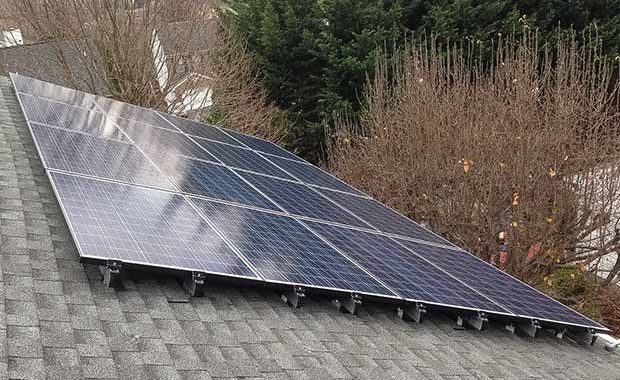There’s never been a better time for Cuyahoga County homeowners to invest in rooftop solar arrays. That was the message delivered by Solar United Neighbors Ohio Program Director Tristan Rader at an information session held at the Bay Village Public Library Thursday evening.
The combination of falling prices for solar arrays, federal tax incentives, low interest loan programs, and lower electrical bills can cut the cost of a residential system by thousands of dollars, said Rader. In addition, homeowners now have an opportunity to join a County-sponsored solar co-op which can lower the costs of a solar array even further.
Solar United is a non-profit organization that is partnering with Cuyahoga County to create a cooperative group of potential solar customers to reduce the cost of installing solar arrays. “We leverage the power of multiple residents in the cooperative,” said Rader. “By providing a larger customer base, we can achieve lower prices.”
The co-op solicits bids from vendors and all members receive the benefit of the reduced rates. Generally, costs for each co-op member are between 10 percent and 20 percent less than if they contracted with the solar providers individually, said Rader.
Solar United has assisted more than 200 co-ops in twelve states, with more than 100,000 members total, and has supported the installation of more than 4,600 solar arrays. This is their second Cuyahoga County co-op, and the third that the county has organized.
“Our mission is to provide education and information,” said Rader. “We support homeowners throughout the process.”
Installing solar panels can save homeowners significant money on their electric bills over the estimated 25-year life of their system. Cuyahoga County residents who participated in the county’s previous co-op programs will likely save $25,000 over 25 years, according to Cuyahoga County Director of Sustainability, Mike Foley, in a press release.
A residential system will usually cost between $10,000 and $20,000, depending on the amount of power the array can provide. A typical residential solar array can cover anywhere from 20 percent to 80 percent of a home’s electrical needs, said Rader.
If a homeowner’s system generates more power than the home requires, the excess power will be added to the power grid and the homeowner will receive a credit from the electric company that can offset the cost of power that is purchased later.
There is no cost to join the co-op and no obligation to purchase an array, said Rader. Once the co-op selects a vendor, that supplier will visit each co-op member’s home to determine what size system makes the most sense, how and where it should be installed, and how much the installation will cost. The member can then decide if he or she wants to move ahead with the project.
During the visit the vendor can answer any questions about the technology and the installation process, while Solar United representatives can provide information about available low-interest loan programs or other financing options.
The cost of generating electricity using solar panels has declined every year since 2009, and is expected to continue declining, according to the United States Department of Energy. Installation and permitting costs are also dropping. In some parts of the U.S. solar power is already cost-competitive with power supplied by the local electric utility.
In addition to economic advantages, solar power generation produces no greenhouse gases, helps reduce America’s dependence on imported fuels, contributes to a more diversified and robust energy system, and supports hundreds of thousands of American jobs.
Homeowners and business owners in Cuyahoga County can join the county’s current solar co-op until February 2020.
For more information or to join the co-op, go to www.SolarUnitedNeighbors.org/Cuyahoga.
(Photo: Courtesy of Ohio Sun)
October 24, 2019
